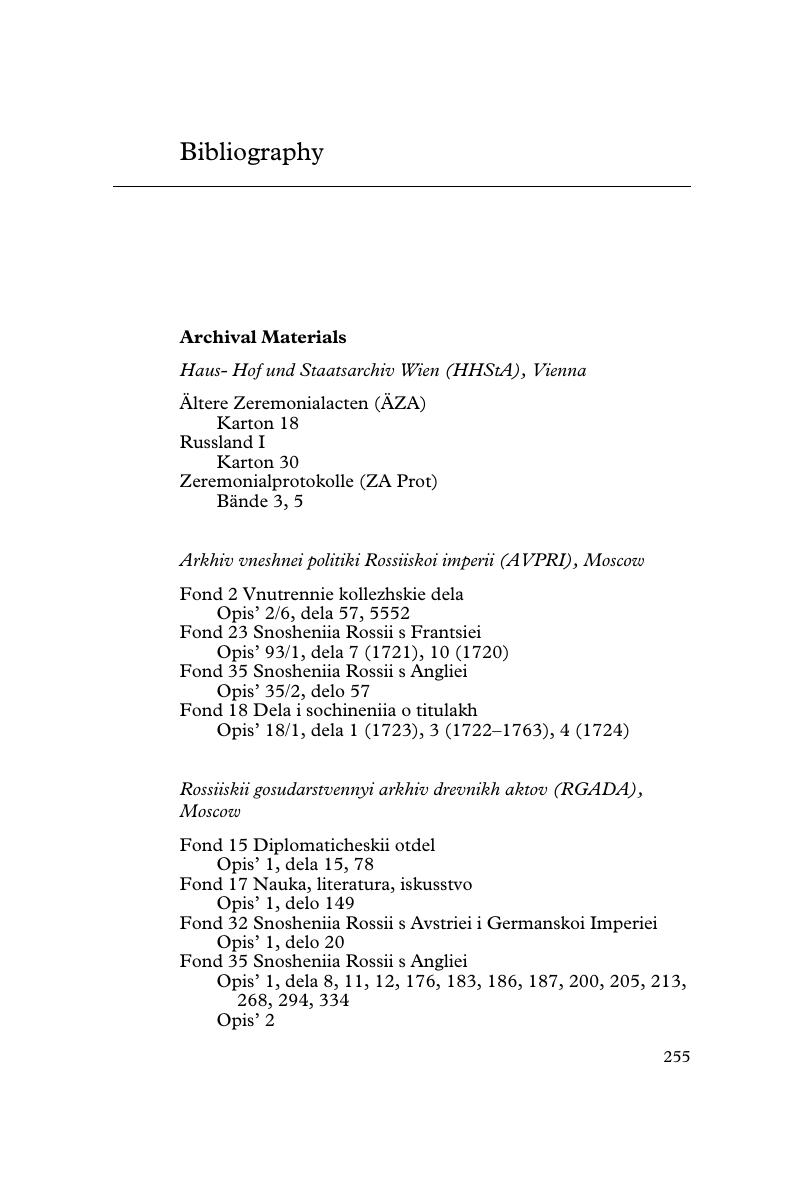Book contents
- Russia and Courtly Europe
- New Studies in European History
- Russia and Courtly Europe
- Copyright page
- Contents
- Illustrations
- Book part
- Notes on Transliteration, Spelling, and Dates
- Glossary
- Introduction
- 1 Barbarous Ceremonies? Russia’s Places in Early Modern Diplomacy
- 2 Facts and Fictions
- 3 Through the Prism of Ritual
- 4 Stage and Audience
- 5 From Insult to Imperator
- Conclusion
- Bibliography
- Index
- References
Bibliography
Published online by Cambridge University Press: 20 October 2016
- Russia and Courtly Europe
- New Studies in European History
- Russia and Courtly Europe
- Copyright page
- Contents
- Illustrations
- Book part
- Notes on Transliteration, Spelling, and Dates
- Glossary
- Introduction
- 1 Barbarous Ceremonies? Russia’s Places in Early Modern Diplomacy
- 2 Facts and Fictions
- 3 Through the Prism of Ritual
- 4 Stage and Audience
- 5 From Insult to Imperator
- Conclusion
- Bibliography
- Index
- References
Summary

- Type
- Chapter
- Information
- Russia and Courtly EuropeRitual and the Culture of Diplomacy, 1648–1725, pp. 255 - 291Publisher: Cambridge University PressPrint publication year: 2016

